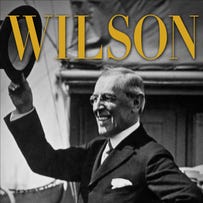Lecturing at RMIT

RMIT is a unique campus, at least in Australian terms – like NYU or the Sorbonne, it’s a university that wraps itself around city blocks – in the heart of Melbourne. It was a pleasure to talk to 150 students of International Relations about geopolitics in the 1920s and the 1930s.All such discussions must start with the outbreak of World War One. It is central, seminal, in contemporary history. I told the students that for me two facts about the war stand out. First, the casual way the European powers committed themselves – the Austrian note on Serbia, the quick and absolute backing of the Austrians by the Germans and so on. Second, the war gave rise to the dystopia of 20th century history. And the Russian revolution of 1917 which installed a one party Marxist-Leninist dictatorship was the first of the war’s shocking outcomes. An estimated 30 to 40 million people were slaughtered by the Bolsheviks between 1917 and 1940. I referred students to the works of Robert Conquest, Alexander Solzhenitsyn and Martin Amis (as recommended in My Reading Life).
On Nazism I referred to my recent visit of the Yad Vashem Holocaust museum in Jerusalem. I told them I now understood Hitler’s anti-Semitism as the core of his program, not an opportunistic add-on. This made Nazism the most radical version of the world’s fascisms, wedded – as it came to be in 1942 – to the murder of all European Jewry.
The other thing I learned in recent years was that if Hitler had won, the death camps would have been expanded to eliminate the entire leadership of the Polish and Russian nations and other Slavic peoples, as well as “undesirables” from Germany itself such as the disabled, convicted criminals, the homeless and homosexuals. Another key observation about Nazism was that it replicated the methods pioneered by the Bolsheviks, such as a secret police with power of life and death, a single ruling party of which the secret police was the most important organ and concentration camps providing slave labour.
Reaching a happier terrain, I spoke to them about Franklin Delano Roosevelt, President of the United States from 1933 to 1945 and the greatest of all practitioners of the art of democratic politics. The distinguished American name and a gentry background – “a country squire from Hyde Park” as the poet Benet described him – he was aligned with the reform side of American politics from the era of Woodrow Wilson, and dedicated to constant experimentation in the exercise of power on behalf of workers, farmers and small businesses. I quoted what Arthur Schlesinger Junior said about Roosevelt’s pragmatism:
Without some critical vision, pragmatism could be a meaningless technique; the flight from ideology, a form of laziness; the middle way, an empty conception. For some politicians, such an approach meant nothing more than splitting the difference between extremes: the middle of the road was thus determined by the clamor from each side. At times it appeared to mean little more than this to Roosevelt. But at bottom he had a guiding vision with substantive content of its own. The content was not, however, intellectual; and this is where he disappointed more precise and exacting minds around him. It was rather a human content, a sense of the fortune and happiness of the people.
I spend a lot of my time reading history. It’s a pleasure to share, especially with youngsters enthused by the humanities. I found myself groping for the name of the reformist Prime Minister under Tsar Nicholas II, and promised a copy of My Reading Life whichever student beat me to it. There may have been 10 who called out Stolypin. The prize goes to Amy Sellars to whom the book has just been dispatched.
Comments are closed.


I’m glad to see that there were 10 kids in your audience who beat you to Stolypin. Give em all a prize.
Was Wonderful having you in, I enjoyed the passion in your lecture. Thank you very much 🙂